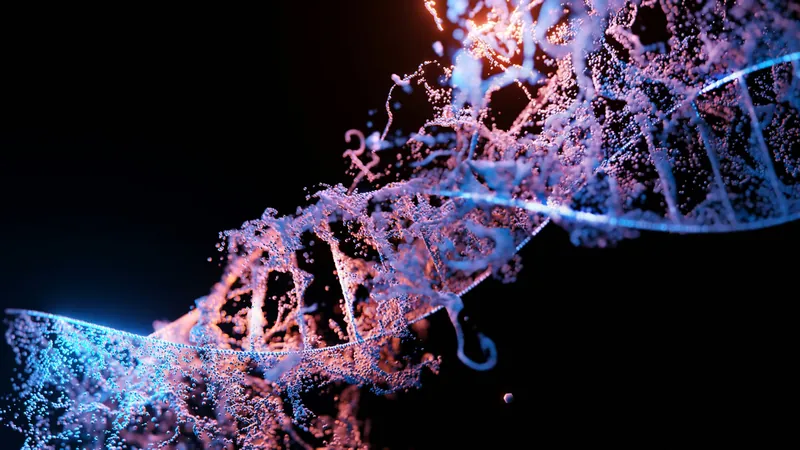
Uncovering the Genetic Secrets Behind Cleft Lip and Cleft Palate
2025-04-17
Author: Wei
A Common Birth Defect with Complex Origins
Cleft lip and cleft palate are among the most prevalent birth defects, affecting approximately 1 in every 1,050 births in the United States. These conditions arise when the tissues forming the lip or roof of the mouth fail to fully join, and researchers believe a mix of genetic and environmental influences plays a crucial role.
Breakthrough Research at MIT
In a groundbreaking study led by MIT biologists, a genetic variant associated with these facial malformations has been linked to the development of cleft conditions. Eliezer Calo, an associate professor at MIT, is the senior author of this pivotal paper published in the American Journal of Human Genetics.
The researchers found that this genetic variant significantly reduces the supply of transfer RNA (tRNA), a crucial molecule needed for protein assembly. This reduction leads to a failure in the fusion of embryonic facial cells, ultimately manifesting as cleft lip and palate.
Understanding the Role of DDX1
Michaela Bartusel, the study’s lead author, emphasizes the importance of the gene DDX1, which is vital for processing tRNA. Without it, specific tRNAs cannot transport necessary amino acids to the ribosome, halting protein production essential for proper facial development.
A Gene’s Mysterious Connection
Although previous studies acknowledged genetic mutations causing cleft conditions, many remained unexplained. Cleft lip and palate have often perplexed scientists due to their dual influence from genetics and environmental factors.
Investigating Enhancer Regions
The MIT team explored genetic variants linked to cleft malformations, zeroing in on a non-coding DNA region called e2p24.2. This enhancer region seems to control the expression of nearby genes, including DDX1, which had been previously linked to facial malformations.
Interestingly, while around 400 types of tRNAs exist, only a select few require splicing; these particular tRNAs become dysfunctional when DDX1 is compromised. The researchers believe that the amino acids transported by these trRNAs are crucial for developing the embryonic face.
Exploring tRNA’s Role in Development
This study is the first to connect tRNA dysfunction with craniofacial malformations, offering a new perspective on the underlying causes of such defects. The researchers now aim to identify the proteins most affected by tRNA loss and understand the cellular responses to ribosome stalling.
A Broader Perspective on Environmental Effects
Calo notes potential parallels between craniofacial development and neurodevelopment, as both are derived from the same embryonic cells. The team is also investigating whether environmental factors, such as oxidative stress from exposure to substances like alcohol or diabetes during pregnancy, further complicate tRNA function.
Future Directions for Research
The researchers aspire to expand their understandings by exploring genetic mutations influencing tRNA while also evaluating environmental impacts on tRNA function. Bartusel hopes these insights will pave the way for prevention strategies against the debilitating effects of cleft lip and palate.


 Brasil (PT)
Brasil (PT)
 Canada (EN)
Canada (EN)
 Chile (ES)
Chile (ES)
 Česko (CS)
Česko (CS)
 대한민국 (KO)
대한민국 (KO)
 España (ES)
España (ES)
 France (FR)
France (FR)
 Hong Kong (EN)
Hong Kong (EN)
 Italia (IT)
Italia (IT)
 日本 (JA)
日本 (JA)
 Magyarország (HU)
Magyarország (HU)
 Norge (NO)
Norge (NO)
 Polska (PL)
Polska (PL)
 Schweiz (DE)
Schweiz (DE)
 Singapore (EN)
Singapore (EN)
 Sverige (SV)
Sverige (SV)
 Suomi (FI)
Suomi (FI)
 Türkiye (TR)
Türkiye (TR)
 الإمارات العربية المتحدة (AR)
الإمارات العربية المتحدة (AR)